June 29 – August 23, 2019
Curated by Hilary Baker and Lauren Kasmer

“The city is a blind courier. It brings nothing. It takes nothing.”
So writes Norman Klein in his seminal work, The History of Forgetting, imagining the European cultural critic Walter Benjamin walking the streets of Los Angeles. The artists included in Blind Courier, Robert Aull, Hilary Baker, Lauren Kasmer, Sharon Levy, Diane Meyer, Minoru Ohira, Osceola Refetoff, Sam Scharf, and Andrew West take this idea of the city as a passive entity and, instead, turn it on its head. These nine artists bring to the exhibition their relationship to a place, their perspectives filtered through memory, imagination, and research. Addressing this, the artists represented in Blind Courier offer a compelling mix of work by documenting, re-defining and re-envisioning dwellings, neighborhoods, and landmarks.
Robert Aull’s delicate constructions are an alternate way of describing a city, seen as ruins, or as a meditation on the elegance of its framework and substructure. Hilary Baker portrays Los Angeles in both her Water Towers and Predators paintings juxtaposing the city’s wildlife against their threatened urban habitats. Lauren Kasmer creates a domestic environment with videos and a mixed media installation sourced from the remains of her fire-ravished home. Sharon Levy's sculpture addresses the convergence of nature and mankind within a sheltered environment. Diane Meyer documents loss and destruction with her embroidered photographs of the Berlin Wall and her customized penny souvenir machine from her Flattened Los Angeles series. Minoru Ohira’s sculptures, made of wood, recycled and reclaimed materials, evoke the architectural influence of three cultures – Japan, Mexico and the United States. Osceola Refetoff’s pinhole photographs of Los Angeles offer views of the city from a wanderer’s perspective. Sam Scharf explores the concept of land ownership in an urban environment referencing architecture and the enduring significance of monuments. Andrew West uses the architectural history of city centers, from Amsterdam to Los Angeles, as compositional starting points for his improvisational abstract paintings.
As curators we originally conceived of this exhibition as an homage to Los Angeles. Expanding on this idea, we selected artists whose work casts a wider net beyond the boundaries of our city. We therefore invite viewers to treat Blind Courier as a map and meander through the individual neighborhoods each artist has created.
- Hilary Baker and Lauren Kasmer, artists and curators
Exhibition Tour
Robert Aull
My current body of work is influenced by memories of my early childhood in the 1950’s growing up in the Baldwin Hills area. As a young child, I spent an abundance of time with my grandfather who was a retired electrical engineer at Bell Telephone in L.A. My grandfather built his own wood working studio, and together we would construct many household items including a functional wood telephone complete with an intercom system. Our grandparents would often take us on day trips to the outskirts of the city, much of which was then quite rural. These serene neighborhoods were eventually overdeveloped – many now suffering from neglect and decay.
These constructions chronicle the patina of the city – the erecting of structures and their subsequent decline. My childhood neighborhood, once dotted with oil derricks that have long since been demolished, has undergone a radical transformation. My assemblages depicting bridges, buildings and urban infrastructure are a way of describing the city as an elegant and precarious ruin.
Hilary Baker
As Los Angeles grows, it changes, and what is lost while it grows may be irreplaceable. But as a native, drawing upon my memory, I make my case for preserving the sites and histories of the city. Both my Water Tower and Predators paintings serve as reminders of a disappearing Los Angeles. The relationship between water towers and the buildings they serve is rapidly fading as neighborhoods change through demolition and development. The towers are examples of a specific function resulting in unintended beauty, and remain as souvenirs of a vanishing world. Hiding in plain view among iconic Los Angeles landmarks are the city’s feral animals, the subjects of my current series, Predators. By siting these animals among vanishing city habitats, the paintings comment on the loss of urban wildlife due to man's interference or, to paraphrase W.G. Sebald, as the result of the natural progression of destruction.
Lauren Kasmer
I have created a domestic environment composed of a mixed media installation sourced from the remains of my fire-ravaged home. Flourish from Fire illustrates the capacity for time - and tragedy – to become a transformative experience where the discovery of beauty creates aesthetic pleasure. The residue of the fire on my home’s walls read as ancient scrolled landscapes. The central components of the installation, the videos Firebird and Mount, are surrounded by familiar domestic objects and furnishings: a couch, wingback chair, wallpaper, photographs and drapery. Arranged in an inviting space, my personal tragedy welcomes contemplation and reflection by the audience. I have introduced the elements of fire into new mediums, printing macro images of the carbon residue of my bedroom wall onto textiles and metal. By working with a variety of materials, I question the way we arrange and interpret our shelters. In the gallery’s room decorated with remnants from my past, I am creating a new present.
Sharon Levy
I make sculptural installations, paintings and drawings that explore both my sense of wonder in the natural world, and my fear and sadness about its destruction. In the interactions between humans and nature I find beauty, darkness, nostalgia, and the desire for escape. Elements of nature have always shaped my experience in built environments.
Many times–on suburban lawns, and in urban parks–I have gazed up into a tree’s green translucent, rustling canopy and experienced a sense of calm and awe at its infinite beauty and perfection. My piece “Canopy”–a mobile made of wooden dowels, handmade translucent green paper leaves, and hardware-celebrates that sense of awe and perfection, while embracing the absurdity of attempting to recreate it.
Diane Meyer
The Berlin series of hand sewn photographs, taken along the entire, roughly 100 mile circumference of the Berlin Wall, uses embroidery as an intervention to restore the invisible. Sections of the photographs have been obscured by cross-stitch embroidery sewn directly into the photograph. The embroidery is made to resemble pixels and borrows the visual language of digital imaging in an analog, tactile process. In many images, the embroidered sections represent the exact scale and location of the former Wall offering a pixelated view of what lies behind. In this way, the embroidery appears as a translucent trace in the landscape of something that no longer exists but is a weight on history and memory. I am interested in the porous nature of memory as well the means by which photography transforms history into nostalgic objects that obscure objective understandings of the past.
Minoru Ohira
I have three different cultural backgrounds: Japan, my birthplace, Mexico, where I was strongly impacted by my travels 40 years ago, and the United States where I currently live. I make large scale sculpture using the methodical process of woodworking. My work is an amalgamation of diverse influences: archaeology, Japanese culture and architecture and western design. By embracing sustainability, my connection to nature is realized by using natural, recycled and reclaimed materials.
Osceola Refetoff
My interest is in documenting humanity’s impact on the world – both the intersection of nature and industry, and the narratives of the people living at those crossroads. My parallel careers as an editorial and fine art photographer are characterized by an evocative, cinematic understanding of how scale, point of view, architecture, and motion can be expressed as both information and experience of a given place. Pinhole exposures are photographs created by gathering light through a pinhole-sized opening. The tiny aperture requires longer shutter times than a traditional lens – up to 30 seconds or more at night. When captured from a tripod, the images manifest a transcendent stillness, while movements during handheld exposures can create expressive, dreamlike abstractions. In both cases, my objective is to capture not only how the city looks, but also the vibrant experience of living here.
Sam Scharf
I am presenting two new site-specific works, SonLight and XtX. SonLight charges by day and shines by night when the gallery is empty of viewers. Much like waking up extra early for a walk or being in the city streets of Los Angeles during late night hours, the installation will offer a glimpse of how a truly intimate exchange can inspire personal reflections. XtX is a three-dimensional X bent over backwards into a cross, and then again to its original stance, an X. Similarly, the city has defined my progress just like the shape - warped and manipulated - but returning to its original form. This connection was natural for the exhibition because a city often comes back to its origins, only after being through a change that has tested its flexibility. This work is comprised of materials that seem to be one thing and upon further inspection re-define the viewers’ expectations.
Andrew West
Moving from Amsterdam to Los Angeles fourteen years ago, I brought with me a heightened interest in the details of the city around me. My passion for life in the Netherlands sharpened my focus on the environment. I was involved in making paintings of man-made objects for ten years prior, but these were rarely linked to the area in which they were found. By the time I settled here, I was actively looking for aspects of the city with which to work. I discovered the history of downtown’s Bunker Hill, and was immediately drawn to both the tragedy and incongruity of its vanished Victorian structures. Before, during, and after this series of paintings, The City Did It, I gathered imagery from my time in Amsterdam. By 2011, I was ready to begin work on this second series, Rijtuigengroen, which is based on the common painters’ color permanent green, and the Art-Deco era ironwork, residential doors, and entire houses found in this color throughout northern Holland.
Homesite Recipe Exchange
In conjunction with the exhibition Blind Courier, Lauren Kasmer and Joyce Dallal brought their Homesite Recipe Exchange to the Brand Library and Art Center. Homesite was an expansive traveling public participatory art installation begun in 1992. It encouraged residents of Los Angeles to contribute stories, visual items and small tableaus, thus forming a collective perspective about the city. The Homesite Recipe Exchange was installed in the Brand’s atrium gallery, where visitors were be invited to share recipes and the stories reflecting their connection to a sense of place, as well as on social platforms such as Facebook and Instagram.The Homesite Recipe Exchange offers the opportunity for all to express their connection to a locale – be it a neighborhood, city or country – through food.
Opening Reception






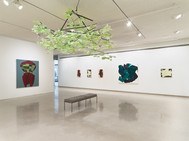










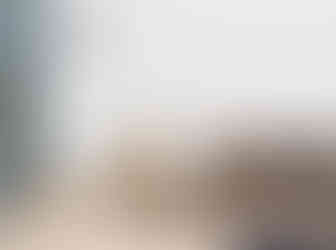




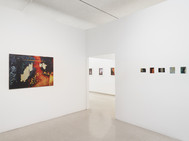











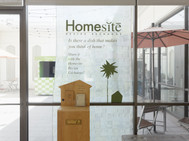



















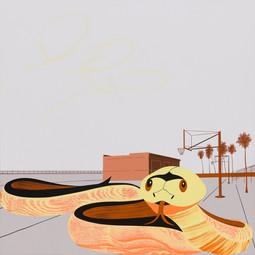








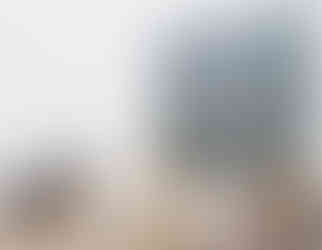












































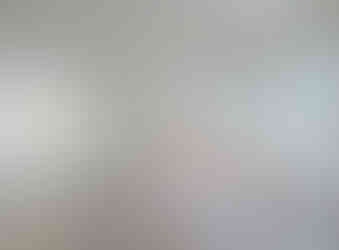

























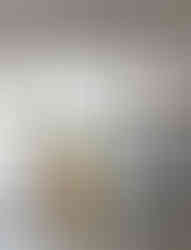





















































Comments